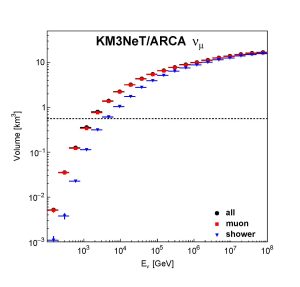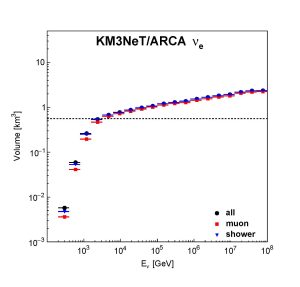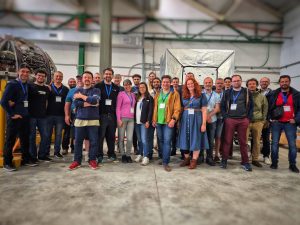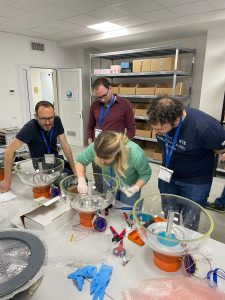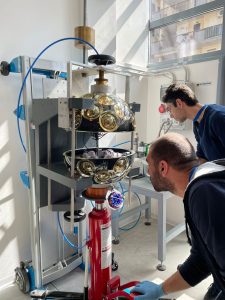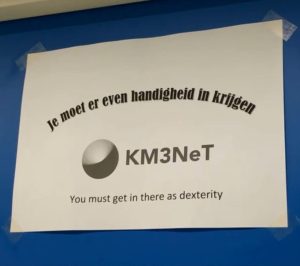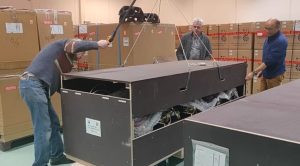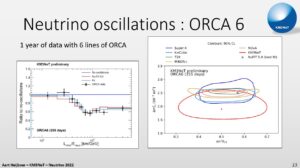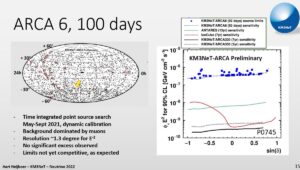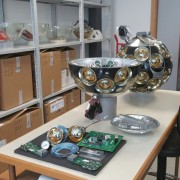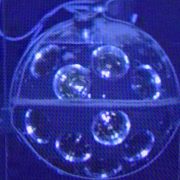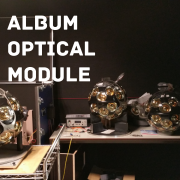The Online Data Filter for the KM3NeT Neutrino Telescopes
10 June 2025 – Recently, we submitted a new paper with the title ‘The Online Data Filter for the KM3NeT Neutrino Telescopes’
In this paper, we present the design and performance of the software that is used to filter the data recorded by the photo-sensors of the KM3NeT detectors.
The KM3NeT telescopes
The KM3NeT collaboration is constructing a large research infrastructure at the bottom of the Mediterranean Sea comprising two telescopes named ARCA and ORCA. Unlike conventional telescopes, the KM3NeT telescopes detect neutrinos and not light from the cosmos.
Neutrinos are notoriously difficult to detect. To overcome this difficulty, KM3NeT uses water in the deep sea. Neutrinos are detected indirectly using three-dimensional arrays of photo-sensors which detect the Cherenkov light that is produced when relativistic charged particles emerge from a neutrino interaction. The density of the water in the deep sea provides for the necessary mass for neutrinos to interact and its transparency for a sufficiently large detection volume.
The online data filter
To filter the data recorded by the photo-sensors in the deep sea, we have implemented a custom designed software system. First, the analogue pulses from the photo-sensors are digitised offshore in the deep sea. Then, all digital data are sent to a control station onshore where they are processed in real time using a farm of commodity servers and custom software.
The filter quality
We have evaluated the performance of the data filter in three terms: its purity, its capacity and its efficiency. The purity – or signal-to-noise ratio – is measured by a comparison of the event rate caused by muons produced by cosmic ray interactions in the Earth’s atmosphere with the event rate caused by the background from decays of radioactive elements in the sea water and bioluminescence. The capacity of the filter is measured by the minimal number of computer servers that is needed to sustain the rate of incoming data. The efficiency is measured by the effective detection volumes of the sensor arrays.
Different event topologies
In nature three different flavours of neutrinos exist, namely electron, muon and tau. They are named after the charged particle that emerges from the neutrino interaction with matter. In the KM3NeT detectors these charged particles are recognised by the different topologies of photo-sensors hit by the Cherenkov light. In particular, a muon produces a long linear track of sensors hit, while the electron reveals itself as a ‘shower’ of sensors hit in multiple directions. Each type of neutrino yields a different effective detection volume.
The effective detection volumes in the figures
As an example, we present in the figures below the effective detection volumes of the ARCA telescope as a function of the neutrino energy for muon- and electron-neutrinos using two designated software algorithms. They show that in both cases the largest volume is obtained with the algorithm that matches the neutrino flavour.
They also show that for neutrinos of about 1 TeV the effective volume reaches the geometrial volume of the detector (dashed line). Below this threshold, the effective volume is smaller due to limited visible energy. Beyond the threshold, the growth of the effective volume can be attributed to neutrino interactions in the vicinity of the detector.
The paper has been submitted to section A of the journal on Nuclear Instruments and Methods in Physics Research – (NIM-A) and is available as a preprint at arXiv 2506.05881.

